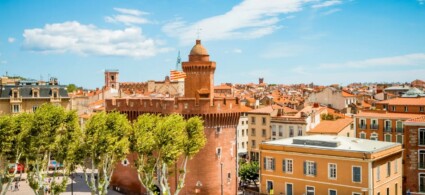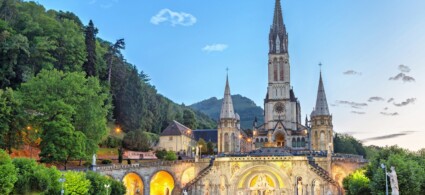

The Pyrenees are a mountain range that forms the natural border between France and Spain. The Pyrenees on the French side lie on the Occitania and New Aquitaine regions and enchant with their majesty and authentic atmosphere. As far as the eye can see, lush and wild nature takes shape, combining magnificent waterfalls, crystal-clear lakes, rocky chasms and majestic peaks.
The unspoilt nature of the French Pyrenees stretches over three parks: the Pyrenees National Park, the Pyrenees Regional Nature Park and the Catalan Pyrenees Regional Nature Park. This vast area, dotted with charming villages and picturesque hamlets, is characterised by a typical and authentic ‘mountain’ atmosphere.
Between the sea, the countryside and the mountains, a visit to the Pyrenees is sure to provide you with an incredible alternation of breathtaking landscapes.

The Pyrenees National Park is a magnificent and unique place. It is located in the south-west of France and consists of the Pyrenees.
The park is home to more than 1,500 species of plants and animals, including brown bears, ibex, vultures and black storks. The park is also home to many medieval villages and castles dating back to the 11th century. Visitors can go hiking, cycling, fishing, camping or simply admire the beautiful scenery.
The department of Pyrénées Orientales is often associated with its coastline and maritime riches. But the enchanting mountains form an exceptional natural ensemble, much of which is under the protection of the Catalan Pyrenees Natural Park.
The famous Canigou massif dominates the region and offers countless hiking opportunities.
The Regional Natural Park of the Ariège Pyrenees was born out of the desire to preserve and enhance an extremely rich and diverse natural, historical and cultural heritage.
By visiting this area, you can discover prehistoric sites in the Pyrenees, traditional villages or admire unique fauna and flora.

The Cirque de Gavarnie is one of the most beautiful and evocative sites in the Pyrenees. It is a natural amphitheatre formed by the convergence of two valleys crossed by a river. The cliffs that form the cirque exceed 1,000 metres and are among the highest in Europe.
The Cirque de Gavarnie was declared a UNESCO World Heritage Site in 1982. It is visited by thousands of tourists who come every year to admire its spectacular beauty and geological features, often following magnificent trekking routes.

The Pic du Midi is one of the 129 main peaks of the Pyrenees chain, thanks to its highest point at 2877 metres above sea level. This natural balcony offers an exceptional view of France and Spain. The mountain is home to a variety of flora and fauna and the views from the top are truly breathtaking.
However, this is not its only asset: it is also a very famous stargazing spot. When the Pyrenean chain disappears into the dark night, a true starry spectacle appears.

The Col de Tourmalet offers a remarkable panorama, especially of the peaks on the Barèges side. This mythical road, which winds through the Escoubous valley, is a flagship stage of the Tour de France.
Today, this route is only accessible to hikers who, starting from the Col du Tourmalet, want to reach the Pic du Midi de Bigorre.

Bordering the Pyrenees National Park, the Néouvielle Nature Reserve is a site of great natural wealth.
Shaped by imposing pine forests, magnificent meadows, the crystal-clear waters of lakes and rivers, and glaciers, the Néouvielle Nature Reserve offers breathtaking views.

Lourdes is a small Pyrenean town in the south-west of France. It is an important Catholic pilgrimage site and home to the Sanctuary of Our Lady of Lourdes, where Mary is said to have appeared to Bernadette Soubirous in 1858. The town has been a popular tourist destination since the early 1800s.
Lourdes welcomes around six million visitors from all over the world each year, making it one of the most popular tourist destinations in France.

The capital of the Pyrénées Orientales, Perpignan is characterised by colourful neighbourhoods and palm-lined streets: stroll through the Saint-Jean quarter, around the Saint-Jean Basptiste cathedral and in the neighbouring streets to the redeveloped buildings such as the Hyacinthe Rigaud museum.
Don’t miss the exceptional ensemble of Place de la Loge, take a gastronomic break at the Halles Vauban and walk along the esplanade to the Palais des Congrès and the Bir-Hakeim square.

Royal, wine-growing, aristocratic, green, the capital of Béarn has many facets.
You can stroll in the shade of the palm trees of the Boulevard des Pyrénées: a small note of exoticism that contrasts with the magnificent panorama of snow-capped mountains. Pau is a privileged base for visiting the French Pyrenees.

At the foot of the French Pyrenees, Oloron-Sainte-Marie is cradled by its history, which began more than 2,000 years ago, and the influences of neighbouring Spain.
It became a hiding place for refugees fleeing the Spanish Civil War. Today, life flows quietly in this picturesque town, located on the road to Santiago de Compostela. Its cathedral is on the UNESCO list and houses a magnificent carved portal and a beautifully coloured choir.
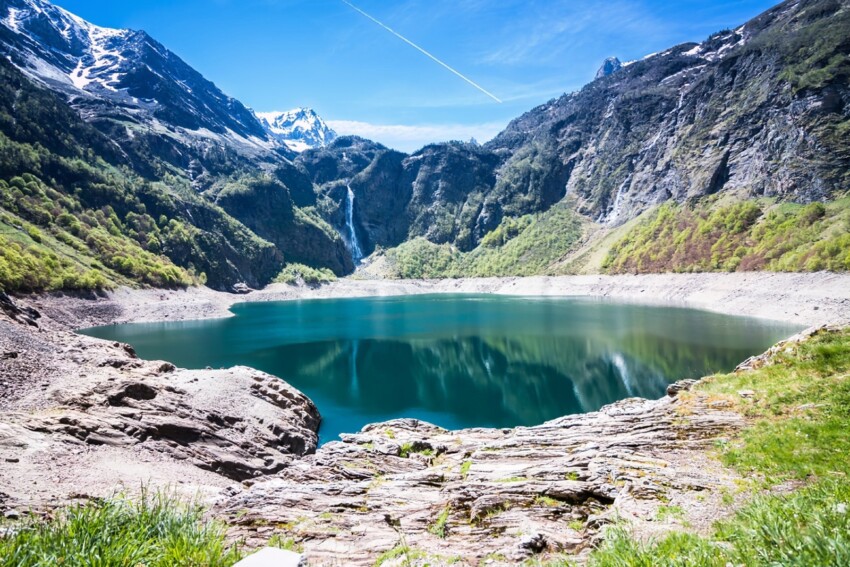
A perfect excursion in the Pyrenees is to the Lac d’Oô in the Astau valley.
It is an enchanting walk, without any difficulty, that leads to a natural spectacle of great beauty: a pretty little lake surrounded by mountains, a waterfall flowing into calm waters, a shady path.

Would you like to visit the Pyrenees on board the famous little yellow train? Also known as the Canary Island train because of its colour, the convoy connects Villefranche-de-Conflent (427 metres) to Latour-de-Carol (1,232 metres) on a 63-kilometre route and climbs 1,200 metres to the Bolquère station, the highest in France at 1,593 metres.
It takes three hours from one end of the line to the other, during which you will have plenty of time to photograph the landscape of the Têt valley and the Cerdan plateau.
The Galamus gorges are one of the most beautiful sites in the Pyrenees. Carved into the limestone by the Galamus river, the gorges are a natural wonder that is also home to a number of rare plants and animals.
The gorges are located in the municipality of Saint-Girons, in the French department of Ariège. The best time to visit the site is from May to October. During this period, the weather is mild and there is less risk of rain.
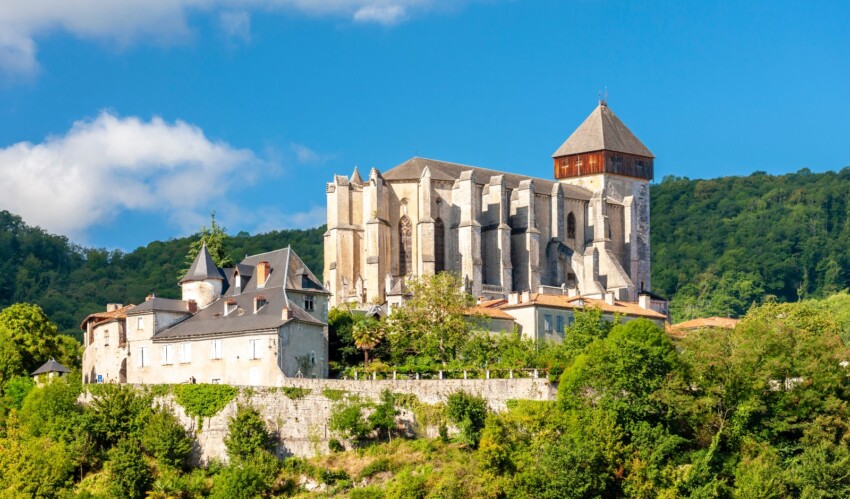
Saint-Bertrand-de-Comminges is a beautiful medieval village located in the French Pyrenees. It is one of the most popular tourist destinations in the region and boasts a number of impressive historical sites.
The village’s main square, Place du Château, houses the imposing 11th-century Saint-Bertrand-de-Comminges Cathedral, a UNESCO World Heritage Site. Other noteworthy sites include the cloister of Saint-Pierre Abbey (12th century) and the town hall (16th century). Visitors can also enjoy a breathtaking view of the surrounding mountains from the bell tower of St. John’s Church.
Saint-Bertrand-de-Comminges is an ideal base for exploring the Pyrenees.
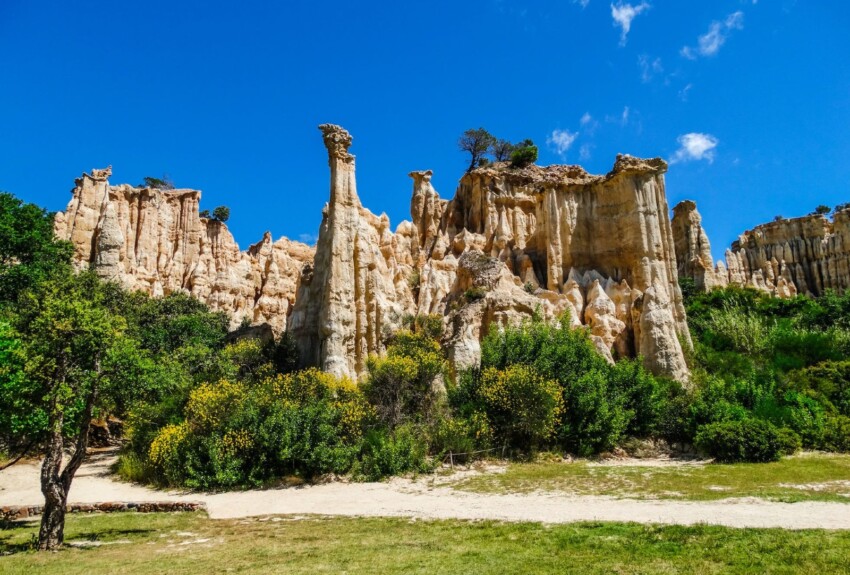
It is a series of limestone cliffs, which have been sculpted into thousands of columns by water and wind erosion.
The cliffs can be up to 30 metres high and stretch for several kilometres. Les Orgues d’Ille-sur-Têt are a popular excursion destination and offer breathtaking views of the surrounding mountains.

The waterfalls of Cauterets are located in the heart of the French Pyrenees, near the Spanish border. They are formed by the Aas River, which flows through a gorge in the mountains about 1 kilometre long and is carved by the river as it drops over 100 metres.
The waterfalls are accessible by a hiking trail from the village of Cauterets. The trail is well-marked and takes about 2 hours to complete. This is a relatively easy hike with some steep sections.

The Ossau Valley Lakes are located in the French Pyrenees and are fed by rivers of the same name: they offer a breathtaking landscape of mountains, forests and waterfalls.
The lakes are famous for fishing, swimming and hiking.

Collioure hides incomparable maritime and architectural treasures: Catalan port, fishing village, medieval heritage and the sunny colours of the Mediterranean coast.
This is where painters Matisse, Derain and Picasso found inspiration, immortalising the beautiful Pyrenees-Oriental coast, also known as the pearl of the Coste Vermeille.
Amidst the flower-filled balconies and houses with colourful façades, you cannot miss the ancient medieval walls that recall the town’s historical past.
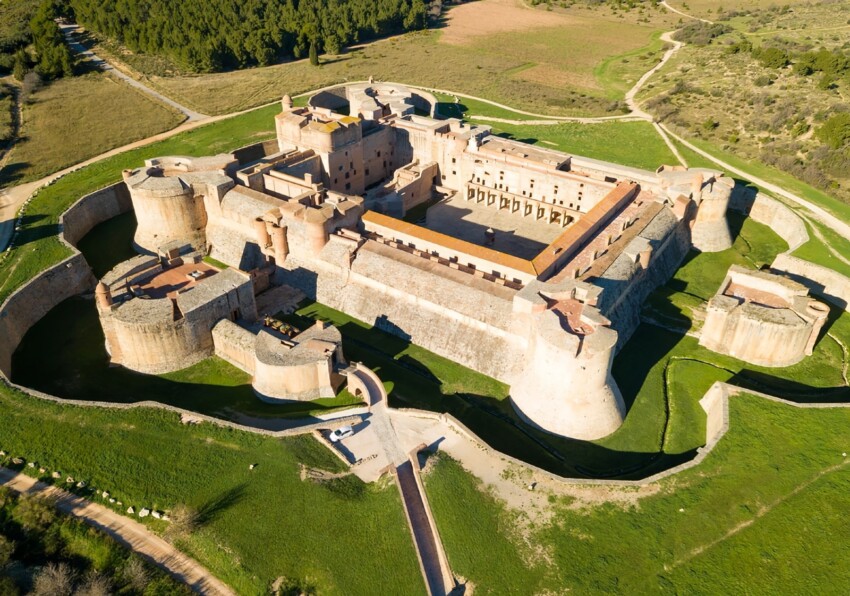
Located between the Salses-Leucate pond and the Corbières, this fortress is strategically positioned to protect the border but also to be a real war machine.
An emblematic place in the eastern Pyrenees, the Salses fortress was built at the end of the 15th century by King Ferdinand II of Aragon in a completely new architectural style. It was meant to resist invasions and modern artillery attacks.
In the 17th century, Vauban partially modified the fortifications of the Salses fortress.
Many mountain lovers in winter visit the Pyrenees for its ski resorts. Indeed, the Pyrenean chain is full of ski resorts that will delight sledging, skiing or snowboarding enthusiasts.
There are in fact no less than 39 ski resorts in the French Pyrenees, in addition to 34 resorts in neighbouring Spain and 3 in Andorra .
Some of the best-known resorts where board sports are popular include Luchon18, with its 32 km of posts, Tourmalet19, the largest ski resort in the French Pyrenees, with more than 100 km of slopes at 2500 metres and 68 pistes, and Font-Romeu Pyrénées 200020, an area with 58 km of slopes and 23 ski lifts.
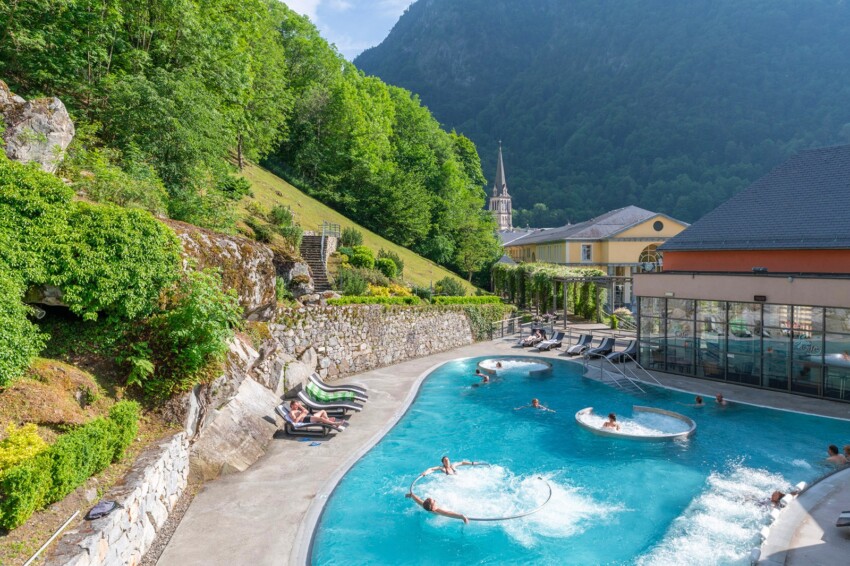
After intense days on the Pyrenean trails, you can devote a few hours to relaxation in the many thermal resorts that characterise the region.
Luchon21 is a beautiful town perched more than 600 metres above sea level. It is located south of the Haute Garonne, in the heart of the Pyrenees. This town benefits from some of the most sulphurous waters in France, which have given rise to numerous thermal baths. Luchon figures prominently among the best thermal resorts in France.
The thermal establishment of Amélie-les-Bains-Palalda22 is located in the heart of Vallespir, in the Catalan region. At the foot of the Pyrenees, a few kilometres from the Mediterranean, this resort benefits from a microclimate of clean air. Here you will find hyperthermal water that gushes out between 44° and 62°C, excellent for treating rheumatic and respiratory ailments.
The thermal resort of Cauterets23, at an altitude of 950 metres, welcomes almost 6,000 thermal guests each year. There are two establishments: the Thermes des Griffons, a rheumatology centre at the foot of the waterfall, and the Thermes de César in the town centre, where respiratory and rheumatology treatments are also available.
The thermal baths of Luz-Saint-Sauveur24, situated on a balcony overlooking the gorges of the Gave de Pau, offer a superb panorama of the lights of the Luz valley. Their exceptional setting, in the heart of the Pyrenees National Park, makes it a tourist destination with many attractions. The treatment areas are part of an architecture that combines Napoleonic history and modernity, creating a majestic décor designed for your well-being.
In the following map you can see the location of the main places of interest mentioned in this article.

The Tour de France is the most famous and difficult cycling race in the world. Every summer it brings together the best cyclists of all nationalities to cover more than 3000 km.
Some of the most beautiful stages of the Tour de France are played out in the Pyrenees: Tourmalet, Portet d’Aspet, Aubisque, Aspin, Marie Blanque, Peyresourde, Puymorens, Plateau de Beille.
In particular, the Col du Tourmalet remains the most climbed pass in the Tour de France since 1910. Suffice it to recall a very young Eddy Merckx, who began a solo ride in 1969 by crossing the Tourmalet eight minutes ahead of the second, or when Armstrong, in 2003, won after a crash at the start of the climb to Luz-Ardiden. Not forgetting the victories of Miguel Indurain, the climbs of Richard Virenque, or the fierce duel, Contador vs Schleck, in the last laces of the Tourmalet in 2010.


